Description
By Dean Mouscher
Trade Paperback Book
ISBN 9780692181027
262 Pages
Bloodletting has long been known as perhaps the most powerful practice in Chinese medicine – the great Master Tung bled some 30-40% of his patients, including his toughest cases.
The first book of its kind, The Complete Guide to Chinese Medicine Bloodletting contains all the detailed information you need to safely and effectively perform bloodletting in your clinic. The updated procedures and instruments described in the book transform bloodletting from a major undertaking to be used only in the most dire cases to a simple procedure that can be safely and easily done every day.
In this book you will learn:
- Where and how to bleed for each indication, including which conditions respond best
- How to safely perform bloodletting on patients taking blood thinners, diabetic patients, older patients, and others with risk factors – and when to avoid it altogether
- Detailed information about instruments and supplies needed
- Detailed instructions on how to bleed each area of the body
- How to talk to patients about bloodletting
- Picture gallery of veins to bleed and veins to avoid
- Guidelines and techniques phlebotomists use to safely perform blood draws on even the sickest patients, along with possible pitfalls and how to avoid them
- Details of the bloodletting system of Master Tung Ching Chang – by many accounts the greatest acupuncturist of modern times – who relied on bloodletting to effectively treat even the most stubborn conditions
About the Author:
Dean Mouscher, a veteran acupuncturist with 17 years experience, Dean Mouscher is an internationally-recognized expert in Chinese bloodletting, with an emphasis on the bloodletting system of Master Tung Ching-Chang. Dean has taught bloodletting seminars across the USA and webinars around the globe.
Praise for The Complete Guide to Chinese Medicine Bloodletting
For many acupuncture practitioners, bloodletting is one of those lost arts of acupuncture practice – something that was mentioned at college, but little was ever taught about it. Bloodletting promises much in clinical terms, but up until recently has received little attention. There are few texts on the subject and even fewer courses available on how to use bloodletting on patients.
About a year ago I joined Chinese Medicine Bloodletting, a group on Facebook run by Dean Mouscher. From this group I learnt enough that I could start bloodletting my patients and I saw good results. This book is a great example of how new and old technology can be used together, with the book as a clinical guide to have at your desk, and the Facebook group giving access to a community of people who are using bloodletting and who can answer the questions that invariably pop up as you get to grips with something new.
Mouscher’s text is a very practical clinical guide, with a minimum of Chinese or Western medical theory (although enough to understand what you are doing and why it works). Henry McCann’s book on the subject, Pricking the Vessels provides a more in-depth look at bloodletting according to classical sources but has less practical advice. The goal of this book is to explain how to bloodlet patients safely and effectively, and thereby ‘reclaim’ bloodletting for modern clinical practice.
It begins by explaining the key concepts, which includes describing the three main areas to bleed, namely the ear apex, the back and the legs. It explains the mechanisms involved, the safety issues, the exact equipment required and step by step instructions on how and when (and when not) to bleed. It also details other issues around bloodletting, such as how to describe it to patients and how to guard against fainting.
The clinical part of the book is broken down into descriptions of the three main areas of the body that can be bled and the conditions that can be treated. Identification of points on the back is based on palpation of specific areas that are considered ‘active’ when tender, and can then most likely be bled with good results. Bleeding the legs is based on locating and bleeding visible spider veins. There are also plenty of case examples where bloodletting has been used successfully, which reinforces the clinical information in the book.
This book is focused on bloodletting according to the Tung tradition, therefore not all the points are standard primary channel points and the numbering system is different from that familiar to TCM practitioners. However, the book is so practical and clear, with plenty of diagrams indicat-ing the different points and zones to bleed, that even those who are not familiar with this system can apply it to treat their patients with good results. The only downside is the quality of the photographs, although to be fair the author states this was a conscious choice to keep the cost of the book down. Luckily there is an accompanying website which displays all the photos in the book in better resolution. This is important as when bleeding the legs it is one must identify which vessels can and cannot be bled, to which end the book offers plenty of photographs .
Varicose veins, for example, should not be bled. This kind of learning can also be reinforced through accessing the Facebook group. We all know that blood stasis occurs as a result of chronic disease and sometimes needles are just not enough. Bloodletting is a powerful therapy that can shift both acute and chronic prob-lems. I use it every day in clinic and my clinical results have improved a great deal since introduc-ing it. An example of the power of bloodletting is bleeding DT.07, a three-point unit or area lateral to the scapula. If it is tender in patients with knee pain, wet-cupping this area can reduce pain a great deal, often instantly.
This is a simple, practical book, that any practitioner can pick up and begin bloodletting straight away with the right equipment. I highly recommend it.
-Jeremy Marshall

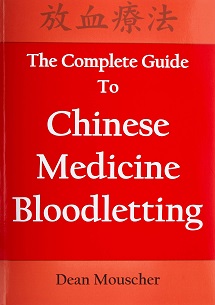
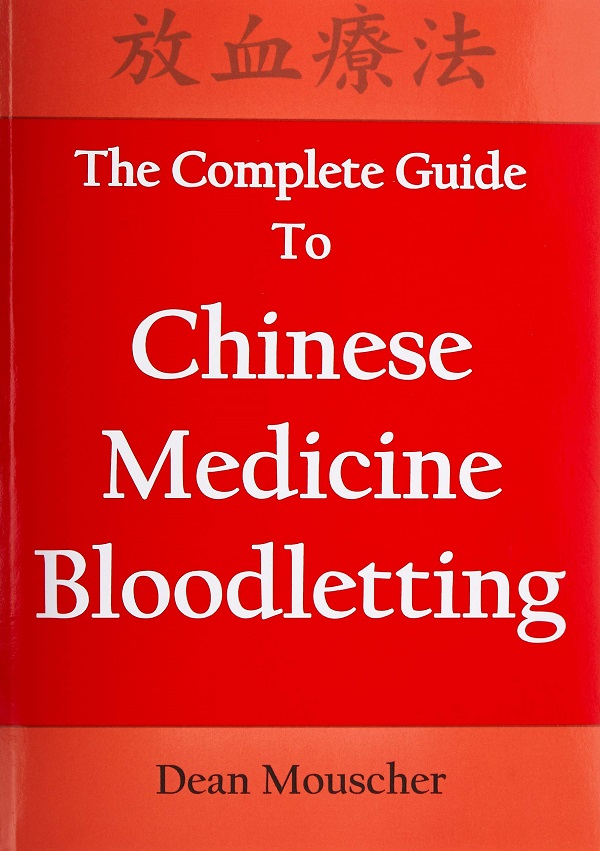
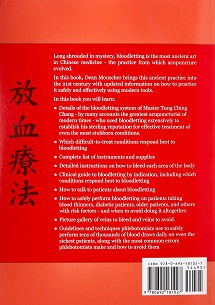
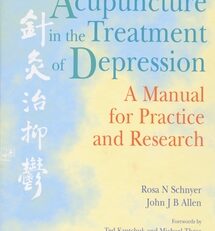
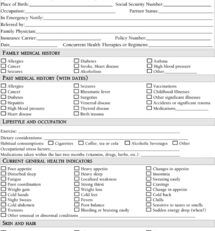
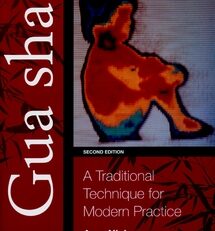
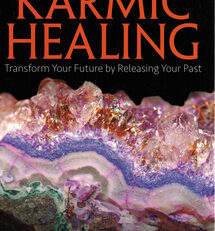
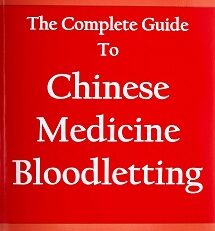
Reviews
There are no reviews yet.